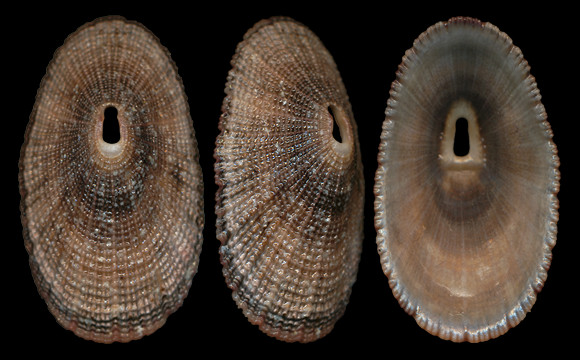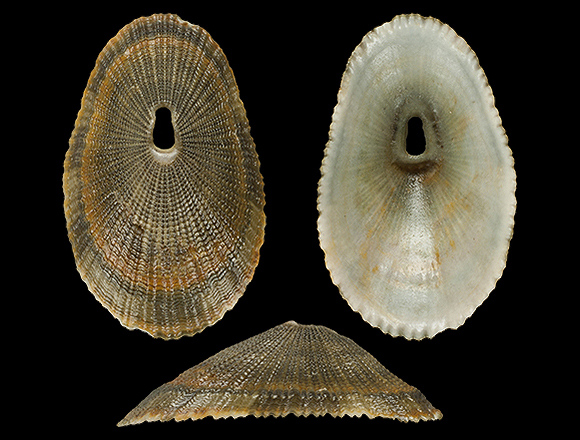Buzzurro & Russo, 2005

Predator on sessile preys. The species lives « under medium-sized stones, or along the edges of larger rocks, at a maximum depth of 2m. […] Based on our own observations, the seafloors most suited to the growth of D. demartiniorum are regularly strewn with large stones on a bed of fine detritus and light-coloured sand. The stones are arranged in a sparse and widely spaced pattern (never densely packed or piled up) in clear and well-oxygenated waters. » – Buzzuro & Russo:“Notes and comments on the Mediterranean species of the Genus Diodora…”, Triton vol. X, 2004. – 1m deep, among seaweeds, Sidi Youssef, Kerkennah, S. Tunisia. 28,5mm.

Shell oval, elongated, with a slightly 8-shaped apical opening; radial sculpture made up of 75-78 radial ribs of equal strength, equidistant, separated by slightly narrower spaces; presence of two secondary riblets per interspace; the radials are crossed by fine concentric cords, evenly spaced, giving the shell a densely cancellate appearance. Peristome almost flat. Apical callus inside. « The species is named after our friends Jeanine and Jean Demartini, who graciously provided some of the material collected on the island of Djerba (Tunisia), with the relevant information on the living molluscs found there. »
Same spot. 33,7mm.
Source: gruppomalacologicoscalaria.org.
Original pictures provided by A. Nappo (IT).
– (CC BY-NC-SA) –

Original picture provided by M. Weinberger (CZ).
– (CC BY-NC-SA) –